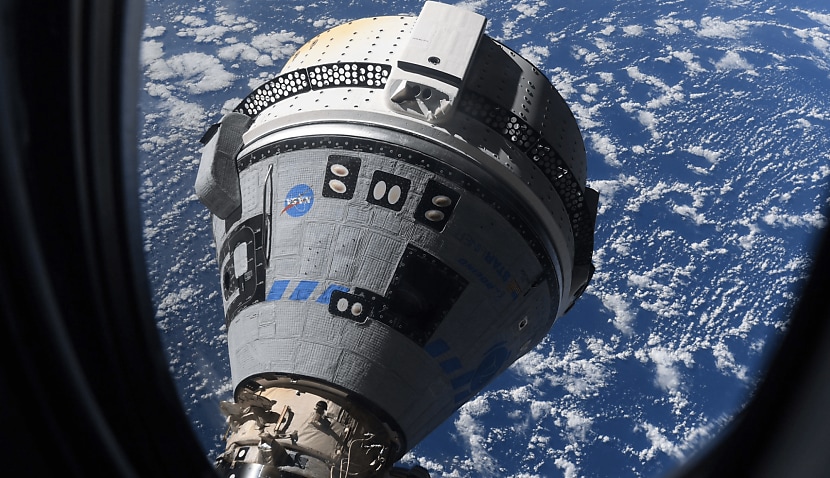
In a Wednesday briefing, the space agency said the tests would be short pulses lasting just 0.1 seconds and could involve some of the aft thrusters that experienced problems on the journey to the International Space Station (ISS).
It comes after NASA conceded defeat last month and revealed Starliner’s ‘stranded’ crew would return to Earth with SpaceX in February – eight months after they blasted off for what was meant to be a one-week mission.
Starliner is now due to undock on 6 September at 11:17pm EST (Saturday, 7 September 1:17pm AEST) and land at the White Sands Space Harbor, New Mexico, following a six-hour journey.
Steve Stich, NASA commercial crew program manager, explained that the thrusters’ test-firings would help the teams “continue to learn”.
“We really want to see how the thrusters perform and what the thrust levels exactly are after we undock and fire them for a little bit,” he said.
“We’ve been entirely focused this summer on understanding what is happening on orbit, trying to decide if we could bring the crew back or not.
“What we need to do now is really lay out the overall plan, which we have not had time to do.”
NASA also revealed that Starliner is now due to have a faster departure – or “breakout burn” – from the ISS because it’s not carrying astronauts.
“Without the crew on board, able to take manual control if needed, there’s just a lot less variables that we need to account for when we do the breakout burn, and allows us to get the vehicle on a trajectory home that much sooner,” Stich said.
After a series of delays, Starliner finally blasted off to the ISS in June on its historic first crewed mission.
The spacecraft was due to come back after just a week with its two astronauts on board, but issues with both the thrusters and helium leaks on the outward journey mean their stay will now extend to eight months.
The decision to return the crew on a separate SpaceX spacecraft came despite weeks of strong denial from Boeing and NASA.
Over the last two months, teams on Earth have been trying to duplicate the loss of performance in the thrusters, with researchers concluding that a Teflon seal had heated and expanded, which constrained the flow of oxidiser.
However, NASA finally concluded there was still “too much uncertainty” in predicting how the thruster would perform after undocking, and instead opted to send the spacecraft back without crew.
In a boost to Boeing though, Bill Nelson, NASA’s administrator, attempted to downplay criticism of the aerospace giant by arguing spaceflight is risky “even at its routine” and a test flight “by nature is neither safe nor routine”.
“So the decision to keep Butch and Suni aboard the ISS and bring the Boeing Starliner home uncrewed is a result of a commitment to safety,” he said. “Safety is our North Star of what we are trying to do in a very hostile environment, in which if you make a mistake, it’s very unforgiving.”
The current Starliner mission is the final test flight before NASA certifies the vehicle for regular operational missions.

Adam Thorn
Adam is a journalist who has worked for more than 40 prestigious media brands in the UK and Australia. Since 2005, his varied career has included stints as a reporter, copy editor, feature writer and editor for publications as diverse as Fleet Street newspaper The Sunday Times, fashion bible Jones, media and marketing website Mumbrella as well as lifestyle magazines such as GQ, Woman’s Weekly, Men’s Health and Loaded. He joined Momentum Media in early 2020 and currently writes for Australian Aviation and World of Aviation.
Receive the latest developments and updates on Australia’s space industry direct to your inbox. Subscribe today to Space Connect here.












